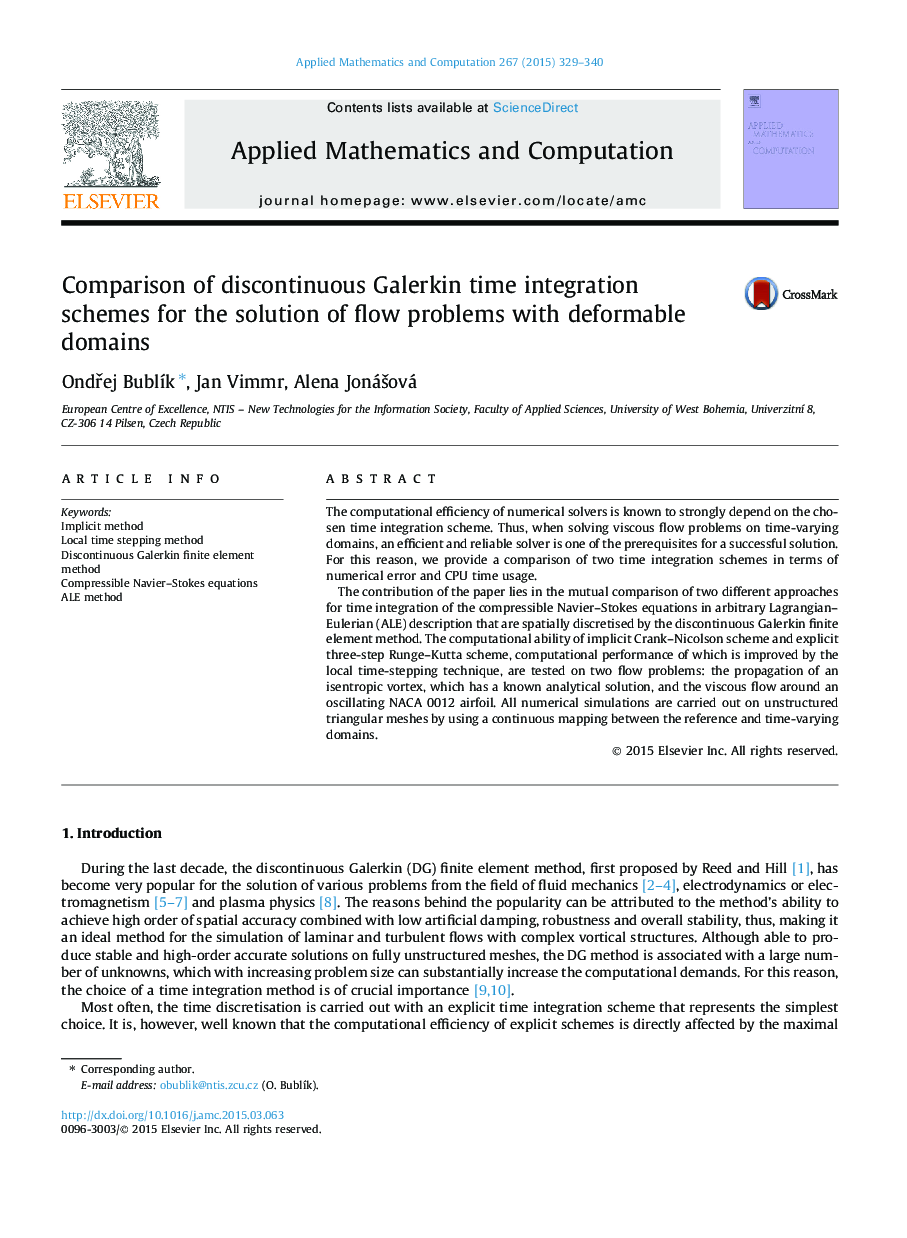| Article ID | Journal | Published Year | Pages | File Type |
|---|---|---|---|---|
| 6420281 | Applied Mathematics and Computation | 2015 | 12 Pages |
The computational efficiency of numerical solvers is known to strongly depend on the chosen time integration scheme. Thus, when solving viscous flow problems on time-varying domains, an efficient and reliable solver is one of the prerequisites for a successful solution. For this reason, we provide a comparison of two time integration schemes in terms of numerical error and CPU time usage.The contribution of the paper lies in the mutual comparison of two different approaches for time integration of the compressible Navier-Stokes equations in arbitrary Lagrangian-Eulerian (ALE) description that are spatially discretised by the discontinuous Galerkin finite element method. The computational ability of implicit Crank-Nicolson scheme and explicit three-step Runge-Kutta scheme, computational performance of which is improved by the local time-stepping technique, are tested on two flow problems: the propagation of an isentropic vortex, which has a known analytical solution, and the viscous flow around an oscillating NACA 0012 airfoil. All numerical simulations are carried out on unstructured triangular meshes by using a continuous mapping between the reference and time-varying domains.
